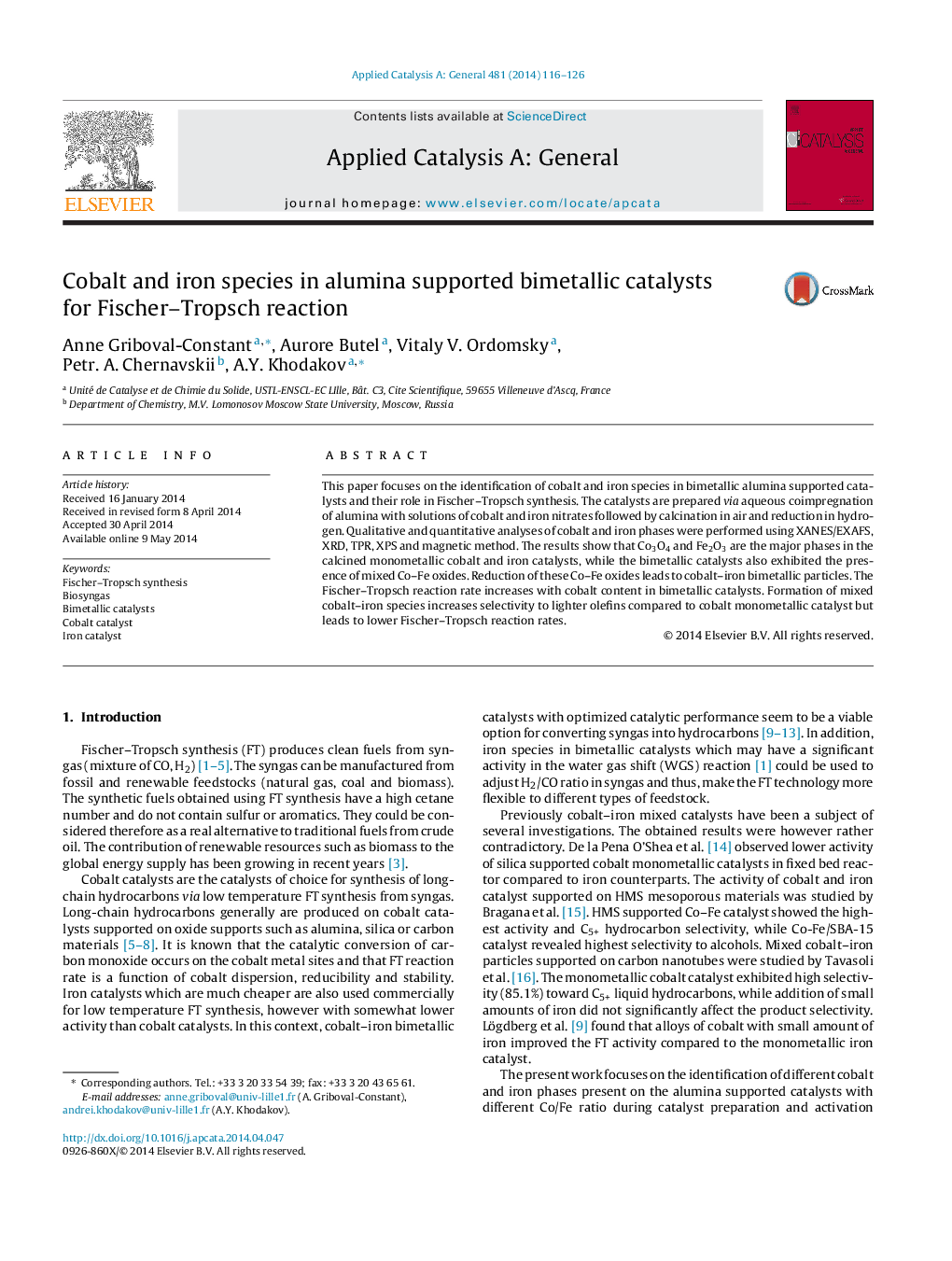| Article ID | Journal | Published Year | Pages | File Type |
|---|---|---|---|---|
| 39883 | Applied Catalysis A: General | 2014 | 11 Pages |
•Different cobalt and iron species as a function of Co/Fe ratio.•Higher dispersion of cobalt and iron in bimetallic catalysts.•Much easier iron and more difficult cobalt reducibilities in bimetallic catalysts.•Cobalt–iron mixed species in both calcined and reduced catalysts.
This paper focuses on the identification of cobalt and iron species in bimetallic alumina supported catalysts and their role in Fischer–Tropsch synthesis. The catalysts are prepared via aqueous coimpregnation of alumina with solutions of cobalt and iron nitrates followed by calcination in air and reduction in hydrogen. Qualitative and quantitative analyses of cobalt and iron phases were performed using XANES/EXAFS, XRD, TPR, XPS and magnetic method. The results show that Co3O4 and Fe2O3 are the major phases in the calcined monometallic cobalt and iron catalysts, while the bimetallic catalysts also exhibited the presence of mixed Co–Fe oxides. Reduction of these Co–Fe oxides leads to cobalt–iron bimetallic particles. The Fischer–Tropsch reaction rate increases with cobalt content in bimetallic catalysts. Formation of mixed cobalt–iron species increases selectivity to lighter olefins compared to cobalt monometallic catalyst but leads to lower Fischer–Tropsch reaction rates.
Graphical abstractFigure optionsDownload full-size imageDownload high-quality image (105 K)Download as PowerPoint slide
